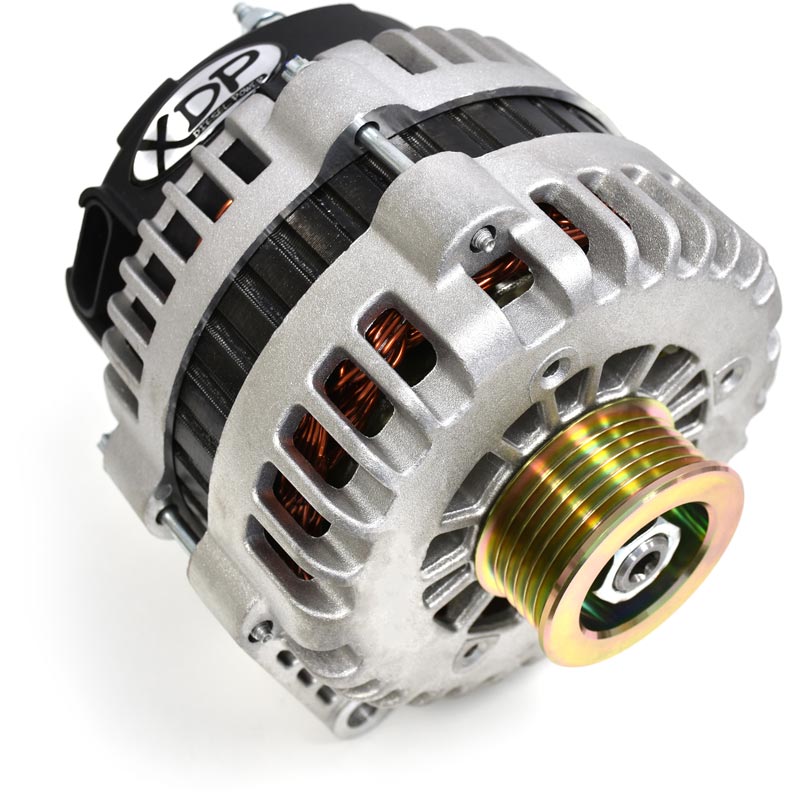I had a buddy when I was younger who ran 2nd alternators on all of his stuff. His family ran an automotive electrical shop, so it sort of was a no-brainer for him. It seems like 2nd alternators are not done as often anymore with much higher output alternators available. Of course, a higher output single alternator doesn't give you the redundancy you're after.
Are you handy with basic fab-work and automotive wiring at all? Do you have friends that are? If not you might want to leave this to pros. I'd actually call stereo shops to see if they've done multi-alternator setups (or low-rider/hydraulic shops if you have them in your area). The way my buddy ran his, and the way I'd suggest would be an isolated belt just for the 2nd alternator. Yes, you could try to get the alternator snaked in with your current accessory drive, but then a) you're complicating that setup and you no longer can get a replacement belt by just looking up your vehicle b) you don't have true isolation/redundancy. I'd start with determining if you even have room to make this happen. You need a spot for the 2nd alternator obviously, but you also need enough room in front of the current balancer/pulley assembly to add another pulley. These days most vehicles now run a 1-piece balancer/pulley that's very had to add an additional pulley to properly. One option there would be to switch to an ATI damper that *usually* has a bolt-on crank pulley. That gives you some options to "stack." Another option is to drive the alternator of any other pulley in the assembly (power-steering, the current alternator, etc.). In fact, if I remember right my buddy often just stacked alternator pulleys on the primary alt.
From there, how you wire it up will be the interesting part. You said it you want it exclusively for the house-batteries back in the trailer, right? I think you'll need to run decently large-gauge wiring all the way back to the trailer, using a dedicated, large connector vs. trying to route that kind of power through the 4/7 pin trailer connector. Then you also have to figure out how you'll cross it over to the chassis battery(ies) if needed. One simple option is just to make sure your wiring harness has enough slack that if the primary fails you can just disconnect from it, and connect to the secondary. A transfer switch of some sort would be a more elegant solution. Another way to do it would be not to fully separate the systems, but use a proper battery isolator. These isolators make sure 100% of the charging goes to the chassis battery until it reaches a specific voltage, then they begin to charge the secondary battery(ies). With a setup like this you'd wire both alternators to it so they'll provide charging to both the vehicle and trailer. The only "problem" with this is that I suppose it'd be harder to detect a single alternator dying.
Alllllllllllllllll of that said, with Overlanding we tend to have hours and hours of drive time between camping stops. As such, I really think an isolator like I described and just your single alternator will get the job done. Perhaps swapped out your current, good alternator with a higher output unit and keep the stock one as a spare in the rig or trailer somewhere? Sometimes KISS is best.
-TJ





